









I came across this pretty little patchwork lace coverlet a while ago, and using the wonderful internet site lacefairy found out that it is a piece of Normandy lace, a type of lace from northern France made in the early 20th century from pieces of lace and embroidery patched together. Normandy lace was usually made from little treasured pieces, often salvaged from damaged items, in order to give them a new life! What a beautiful and brilliant idea, so eco friendly!
This one has been made from a mixture of early whitework embroidery dating to the late 1700s - early 1800s, Victorian chemical lace and machine laces, some 19th century Valenciennes lace, prettily darned net and more. The little panel has been stitched onto a fleece-filled pink silk panel, with one end shaped to look like a turned-over top sheet, so I assume it was intended to be a coverlet for a baby's or doll's crib, as it is very small.
I can always find so much inspiration from the past, especially where textiles are concerned, nothing was ever wasted, if it could be re-used, it was, an ethos we could well learn from in our 'throw away' culture.
This one has been made from a mixture of early whitework embroidery dating to the late 1700s - early 1800s, Victorian chemical lace and machine laces, some 19th century Valenciennes lace, prettily darned net and more. The little panel has been stitched onto a fleece-filled pink silk panel, with one end shaped to look like a turned-over top sheet, so I assume it was intended to be a coverlet for a baby's or doll's crib, as it is very small.
I can always find so much inspiration from the past, especially where textiles are concerned, nothing was ever wasted, if it could be re-used, it was, an ethos we could well learn from in our 'throw away' culture.

























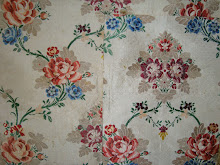





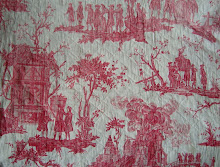
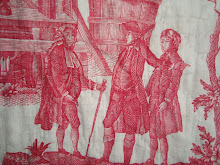




































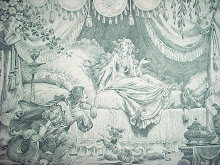







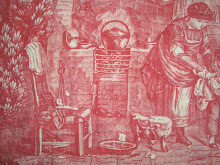





I love pieces like this. They are so delicate and feminine. I could study them forever. Yes, wasn't it so nice that they use to treasure every little piece. Wish we still did that. I need to look up "chemical lace" because I am not sure I am familiar with that.
ReplyDeleteI must learn to sew... Chemical lace was an ingeniuos technique invented during Victorian times, embroidery was machined onto fabric in a lace-type pattern, then the background fabric was chemically 'burnt' away, leaving the embroidery looking like lace, the edges of chemical laces always a little fuzzy due to the process. Cunning eh?! The curved piece shown in detail in the 6th pic from the top is the chemical lace. All the best xx
ReplyDeleteHow fascinating. Now I am wondering if this would have lessened the life of a piece by the chemical process, similar to the metal salts used in silks to give them more weight. Textile history is so fascinating! Thanks for the explanation, Lois
ReplyDelete